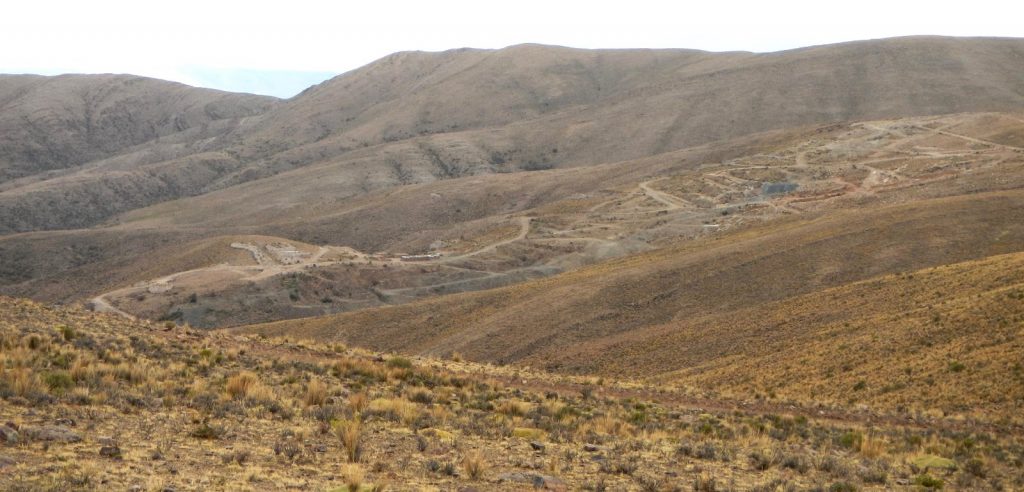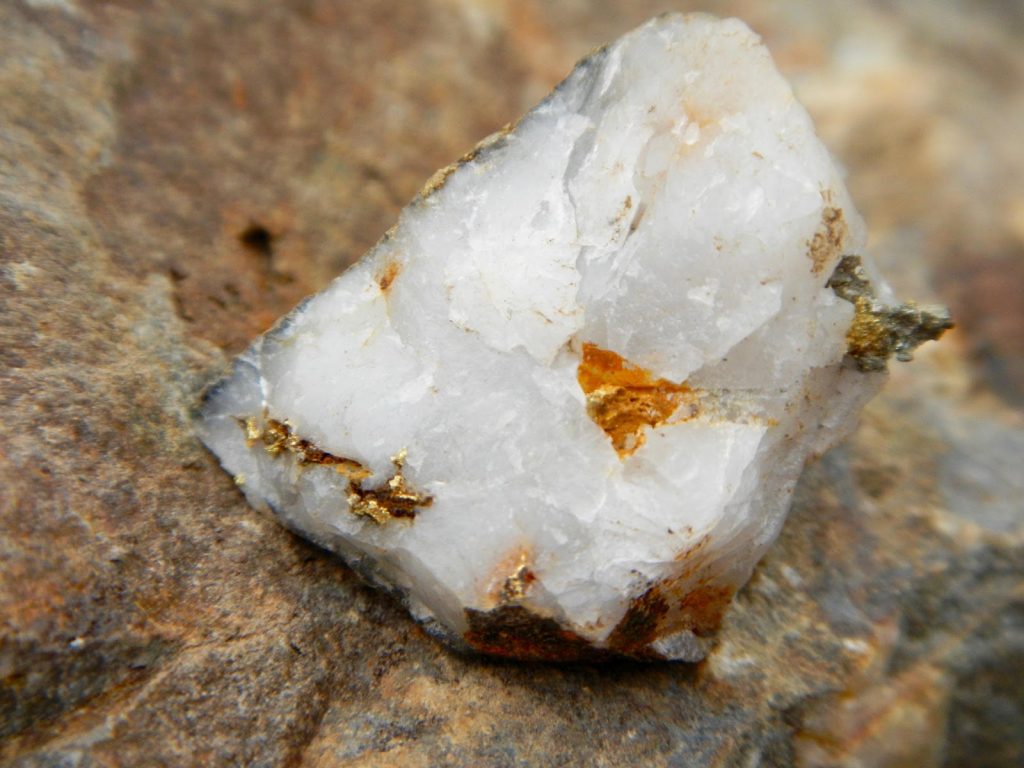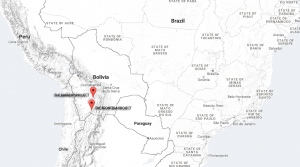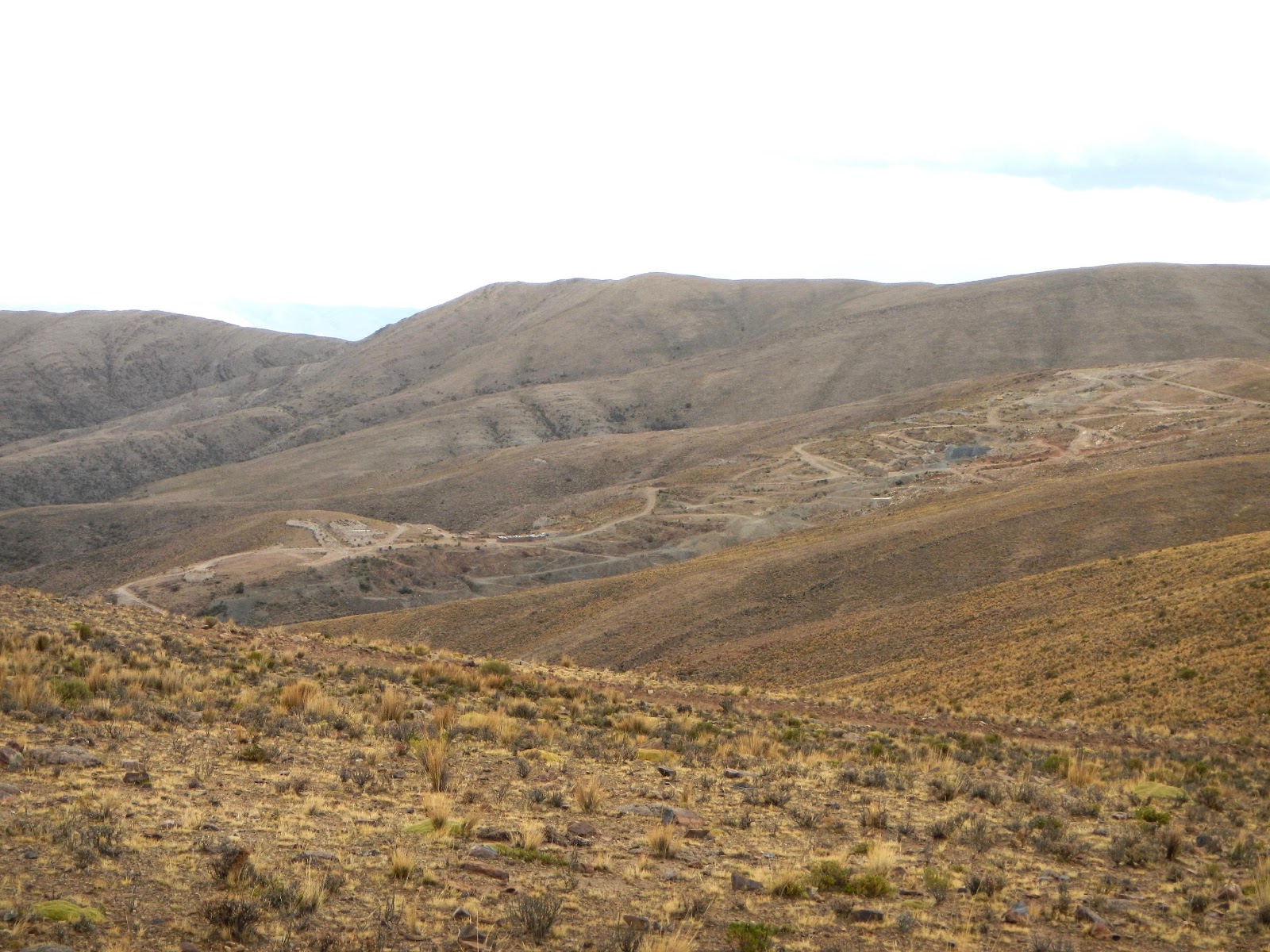
The Frontera Project – The Golden Frontier
Location & Access
This gold project is located approximately 800 km from La Paz, in the southeastern Cordillera of Bolivia near Tupiza. The property is representative of the gold deposits that occur in the southern Bolivian Andes.
Situated at elevations averaging 3,700 meters above sea level the topographic relief is moderate and generally consists of high ridges, steep slopes and deep narrow valleys with over 100 meters of relief in the immediate area.
The concession extends approximately 600 hectares and access is via well paved highways and the internal secondary road to the property is in good condition all year around.
Old workings on the property adjacent to Frontier Mining.
Geology & Mineralization
The prospect is representative of the orogenic gold deposits that occur in the region. It is hosted in turbidites (sandstone, and sandy slates) of Ordovician age. It extends about seven kilometer trending north-south in length, approximately 2km in width. The mineralization comprises several sets of gold-bearing quartz veins, veinlets, stockworks and breccia zones, which are located mainly along the axial zones of the main anticline and of minor drag folds. The minerals consist of pyrite, stibnite, chalcopyrite, arsenopyrite, limonite, cervantite and fine and coarse gold.
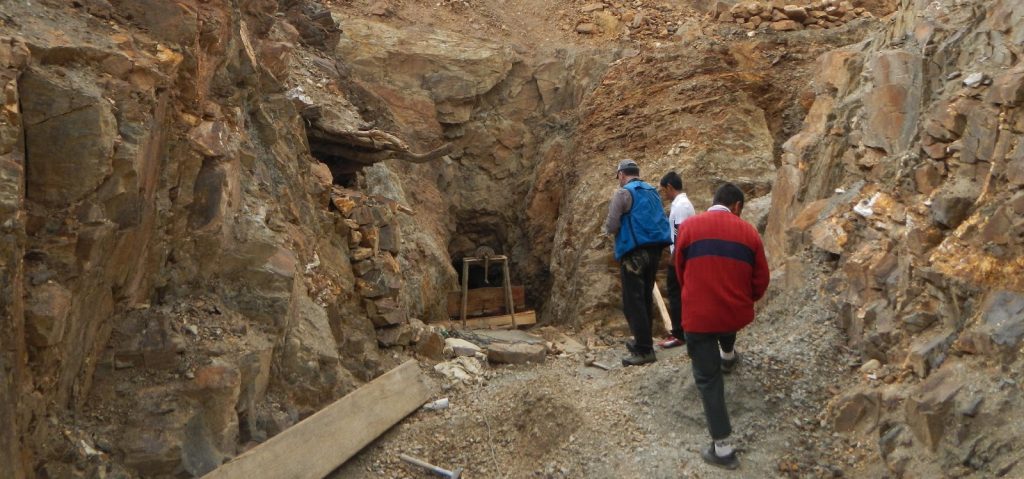
One of many artisanal adits on the property
Exploration
Preliminary work has begun on the Frontera and we are also renewing our option to acquire the adjacent concession to expand our footprint. On the adjoining tenement work to date encompasses detailed mapping, channel-rock and trench sampling, topographic surveys, diamond drilling and reverse circulation drilling (RC 1140 m and DDH 1188 m), which has yielded significant results both near surface and underground.
Potential
The Au potential of the property contiguous with Frontier can be defined as Measured and Indicated resource totaling 24.1 million tonnes at 1.41 grams/tonne (1.1 million ounces gold). In addition, an Inferred & Potential resource totaling 18.7 million tonnes at similar grade (0.8 million ounces gold).
This deposit’s history may have begun as early as the eighteenth century when the Spanish Colony did their first exploration/exploitation of gold works.
During the Republic era, underground works were developed all over the target area. Artisanal mining dates back to the mid-20th Century and continues in the area today providing a livelihood for a few families.
Coarse gold in quartz from the acquisition target
Why Bolivia?
Bolivia is a country with a long mining heritage and today’s existing industry is a vibrant one. Some of the majors are well established and have been able to operate successfully and unfettered by the leftist administration of Evo Morales including Sumitomo, Coeur de Laine, Coeur Mining, Orvana and Pan American Silver.
Notwithstanding its turbulent political history and the impact on foreign investment in the past, the government has come to the realization that it must more actively promote investment in the mining sector. With diminishing royalties from the oil gas sector due to weak commodity prices, the government has had to liberalize trade and reform certain key sectors including mining in order to attract foreign investors and bolster the economy.
This includes a major reform of the mining law in 2014, to encourage investment in the sector by actively overseeing the consultative process to achieve social license from the local communities and indigenous groups.
The legislation enacted streamlines a process for Free, Prior and Informed Consent handled by the Administrative Jurisdictional Mining Authority. In this case, AJAM facilitates a series of consultations between the mining company and the affected population, limited to a maximum period of four months. If an agreement is not reached, AJAM will mediate and if the parties still fail to reach an agreement, the Ministry of Mining can issue a ministerial resolution to approve the mining contract.
Very few jurisdictions in the world afford this type of de facto investor protection by facilitating social license on behalf of the foreign miner and in such a short time frame.
Pacha Resources has mitigated much of the business risk sometimes associated with Bolivia by virtue of the quality of its management and their expertise in mining law, geology, exploration, and engineering . With over 80 years of combined experience, our Latin America team plays a pivotal role in the communities to obtain social licence and win government support.
As a country considered by many geologists to be the most mineralogically endowed on the planet, Bolivia remains hugely unexplored. According to the most recent data from Ministry of Mines and Minerals, of the total territory considered to be of geological significance, only 10% has been staked and/ or concessioned.
After years of neglect by international investors due to the perceived political risk associated with the Morales government, Bolivia is slowly making its way back into the mainstream of the international mining community.
Although Bolivia is not uppermost in minds of the investment community as the next Ecuador the country is taking a more overtly pro-investment stance and as result gaining traction in some foreign equity markets.

